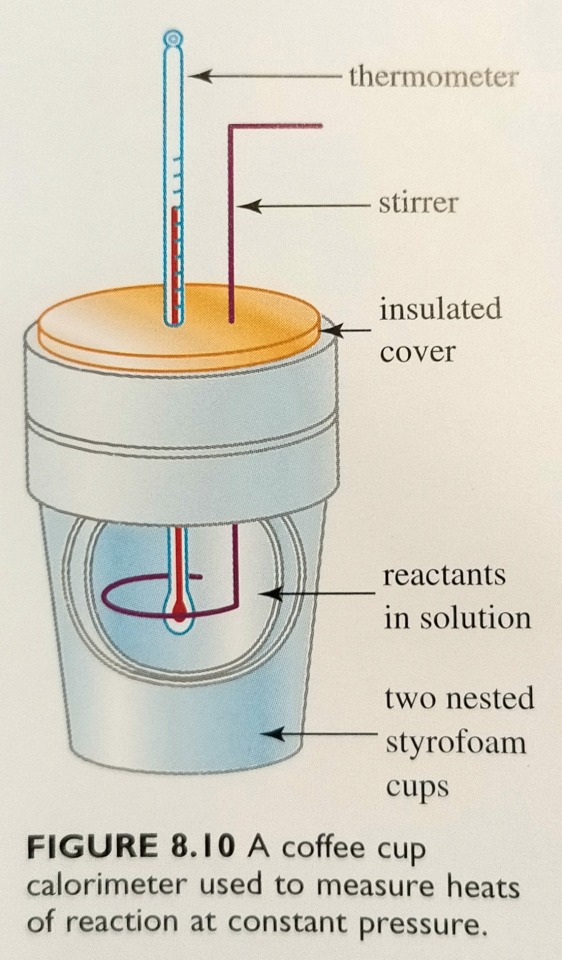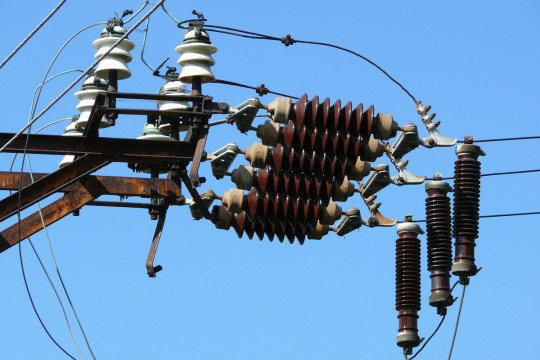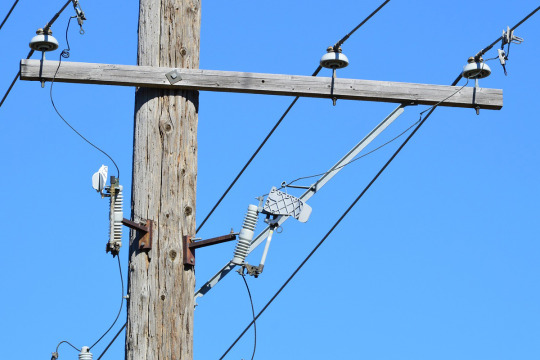#insulator
Video
Alien Pegassa by kazu saito
Via Flickr:
あっ、ペガッサ星人に似ていると思い撮ったのですが、ググってみましたらそれほど似ていませんでした。
34 notes
·
View notes
Text
What Are 2D Materials, and Why Do They Interest Scientists? - Technology Org
New Post has been published on https://thedigitalinsider.com/what-are-2d-materials-and-why-do-they-interest-scientists-technology-org/
What Are 2D Materials, and Why Do They Interest Scientists? - Technology Org
If you’ve read any stories about quantum research lately, in Columbia News or elsewhere, you may have heard the term 2D or two-dimensional materials.
An illustration of the atomic structure of graphene, a form of ultra-strong 2D carbon.
In January, Columbia chemists published a study about the first 2D heavy fermion, a class of material with very heavy electrons. In November, the Engineering school published a story on “Laser-Driving a 2D Material.” And earlier last year, researchers found both superconductivity and ferroelectricity in the same 2D material. The list goes on.
So, what are 2D materials and why are scientists so interested?
Two-dimensional materials are just what they sound like: Materials that are just 1 or 2 atoms thick but wider in every other direction. Often the 2D materials scientists are working with are a few square micrometers large– invisible to the naked eye, but visible with the kind of microscope you might have used in high school science classes. The 2D materials that scientists are working with are a mix of naturally occurring materials, like graphene, a form of ultra-strong carbon discovered at Columbia in 2004, and materials synthesized in labs, like CeSil, a crystal first assembled at Columbia last year, composed of cerium, silicon, and iodine. These materials usually begin as three-dimensional, and scientists peel them down to two dimensions to run experiments on them and find out what physical properties, like superconductivity or magnetism, might emerge when the materials are atom-flat. Scientists are working on developing new ways to make 2D materials from scratch, without needing to peel them down from 3D, but the quality of these is still imperfect.
Many things make 2D materials interesting but a primary one is that they confine the ways that particles like electrons can move within them. Columbia Chemist Xavier Roy used a traffic analogy to explain:
“Think of it like this: If we had flying cars that could travel in three-dimensional space, we would be able to reduce most of the traffic in New York. But since our current cars can only travel in two-dimensions, we end up with huge traffic jams in Times Square,” Roy said in a recent interview.
“The same thing happens for electrons when we move from 3D to 2D, but in our case, ‘traffic’ between electrons is beneficial! As these electron-electron interactions become stronger, we can completely change the properties of a material. For example, as the thickness of 3D heavy fermion materials is reduced (i.e. as they become more 2D), they can transition from being magnetic to superconducting.”
Two-dimensional materials can also be relatively easily tweaked: Stacking them with slight angles between the layers, applying forces like electric fields and magnetic fields, and straining the materials by twisting or applying pressure to them can change their properties. Take just one example: By simply stacking two sheets of a material called tungsten diselenide on top of each other, twisting them, and adding or removing electric charge, the material can switch from an electricity-conducting metal to an electricity-blocking insulator and back again.
Scientists are also excited by 2D materials’ potential uses in technology, which scientists often refer to as “applications.”
Two-dimensional materials will likely play a vital role in the next generation of electronics, including still-under-development quantum computers. Why? In large part, because 2D materials are ultra-small with unique, controllable properties (like superconductivity), and technology is always on the hunt for something that can achieve results more quickly, more efficiently, and using less space.
Source: Columbia University
You can offer your link to a page which is relevant to the topic of this post.
#2D materials#3d#applications#atom#atomic#atoms#carbon#Cars#change#classes#computers#crystal#development#dimensions#direction#electricity#electron#Electronics#electrons#engineering#eye#ferroelectric materials#form#Fundamental physics news#graphene#illustration#insulator#INterview#it#laser
0 notes
Text

Erase the dirt, not the ⚡power!
Our dry ice blast technology ensures a ⭐spotless performance for high-voltage insulators.
Discover the superior cleaning solution that's making ❄️waves in the energy sector.
Connect with us👇🏻
https://amsdryice.com/
WhatsApp us or call now: +918377006793
#dryice#dryicecleaning#dryiceblasting#powergeneration#electricalengineering#electricity#insulator#cleaning#industrycleaning#dryicemachine#cleaningservice#delhi
0 notes
Text
SEDIVER Disc Insulator Glass
Ready in Stock Sell>> Disc Insulator Glass 120KN, 220KN Standard Type and Anti FOG Type Brand SEDIVER, SEDIVER Disc Insulator Glass type Standard and type Anti FOG, High Voltage Disc Insolator Glass.
Mobile/WA: +62 812 2277-7236
Mail-to:…

View On WordPress
#120kn#120kn antifog#120kn glass#120kn standard#220kn#Disc insulator#Glass insulator sediver#Insulator#SEDIVER#Sediver disc insulator
0 notes
Text
Ceramic Insulators: Shaping the Future of Power Distribution
Ceramic insulator market also termed as electric insulator, is used for making various types of industrial heaters or electrical resistance. It provides non-conductive bridges between electronic components. Ceramic insulators are made up of various products such as 96% alumina, magnesium oxide, silicon carbide, porcelain, vitreous china, zircon cordierite, steatite, and others. It is a good insulator product for electronic insulator owing to its various advantages, which include light weight, higher heat resistance, and its ability to handle higher voltage loads.
Factors such as increase in infrastructural investment in various countries followed by favorable government regulations fuel the demand for the global ceramic insulator market. Additionally, ceramic insulators are mainly preferred over its glass counterparts as they possess benefits like more resistant to external damage from installation & shipping and deliver better performance in wet conditions. In addition, it also has high thermal shock resistance. All these factors are expected to boost the growth of the market during the forecast period from 2019 to 2026. However, increase in incidence of pollution flashover accident is expected to hamper the market growth. However, shift in consumer preference toward composite insulator owing to its better performance compared to ceramic insulators, is another factor that hampers the growth of the market. Further, on the other hand, rise in investments in various Smart Grid Projects in developing countries serves as an opportunity for the market.
The global ceramic insulator market is segmented based on type, application, end user, and region. Based on type, the market is divided into ceramic pin insulator, ceramic strain insulator, and ceramic bushing insulator. Based on application, the market is classified into rail, transformer, and cables. Based on end user, it is bifurcated into electrical industry and heater industry. Based on region, the global ceramic insulator market is analyzed across North America, Europe, Asia-Pacific, and LAMEA.
Some of the main market players operating in the global ceramic insulator market are Shandong Zibo Insulators Co., Ltd., Technical Ceramic Australia, ElsewedyElectric, Suraj Ceramics Industries, CJI Porcelain Pvt. Ltd., Bikaner Porcelain Private Limited, Isolantite Manufacturing Company, Inc., Aditya Birla Insulators, Bhatinda Ceramics Pvt. Ltd., and ANDI ENGINEERS.
Key Benefits for Stakeholders:
The global ceramic insulator market size has been analyzed across four major regions.
Porter’s five force analysis helps to analyze the potential of buyers & suppliers and the competitive scenario of ceramic insulator for strategy building.
The report outlines the current market trends and future scenario of the market size from 2018 to 2026 to understand the prevailing opportunities and potential investment pockets. The market is forecasted for 2019–2026.
Major countries in each region have been mapped according to their individual revenue contribution to the regional market.
The key drivers, restraints, opportunities & ceramic insulator market trends along with their detailed impact analysis are elucidated in the study.
The global ceramic insulator market analysis covers in-depth information of the major industry participants.
Questions answered in the ceramic insulator market research report:
What is the growth rate of the ceramic insulator market during the forecast period?
What will be the global ceramic insulator market size from 2019 to 2026?
Who are the leading manufacturing companies in the ceramic insulator market?
How the major current trends will shape the market in the future?
What are the driving factors and opportunities in the market?
Which will be the niches at which players profiling with thorough plans, financials, and also recent advancements should set a presence?
Why are some of the segments flourishing at the highest growth rate while others experience a steady growth?
What are the conclusions of the ceramic insulator report?
0 notes
Text
Electricity is an essential part of our modern lives, and we depend on it for almost everything we do. However, despite the importance of electrical conductivity, there are materials that can resist the flow of electricity. These materials are called insulators, but they are often overlooked and misunderstood. In fact, insulators play a vital role in many electrical systems, from high voltage power lines to the wiring in our homes. In this blog post, we will explore the dark side of insulators and discuss their properties, how they work, and why they are so important in electrical systems. We will also highlight some common misconceptions about insulators and reveal why they are essential to the safe and efficient delivery of electricity. Join us as we break the barrier and unravel the mysteries of insulators in electric current!
0 notes
Text
Hollow Core Insulator
Hollow core insulators are critical components in high-voltage power transmission systems, providing superior insulation and mechanical support under harsh environmental and electrical conditions. Hollow core insulators, produced by industry leaders like YF POWER, are designed to resist leakage current, mechanical stresses, and environmental staining, ensuring safe and long-lasting power transmission systems. These insulators feature a hollow central core, which reduces the amount of material required, making them lighter and easier to install. The hollow core insulators provide excellent mechanical strength, durability, and high resistance to electrical, mechanical, and thermal stress. YF POWER's hollow core insulators are made of high-quality materials, including glass, porcelain, or composite materials, depending on the voltage requirements and environmental conditions. Their insulators have been tested to meet international standards, ensuring optimal performance and reliability for high-voltage power transmission and distribution systems, even in extreme conditions. YF POWER's hollow core insulators provide superior insulation and mechanical support, ensuring the safety and reliability of power transmission systems.
Types of Composite Hollow Core Insulator
Application of Composite Hollow Core Insulators
Hollow core insulators find application in high-voltage power transmission and distribution systems, providing reliable insulation and mechanical support in harsh environmental and electrical conditions. These insulators are designed to withstand high voltage stresses, arcing, and contamination caused by the environment, ensuring safe and long-lasting power transmission systems. Hollow core insulators are used extensively in power transformers, bushings, switchyards, and high-voltage insulation structures, providing superior performance in areas where electrical insulation is critical.
They are used in both outdoor and indoor applications, serving as insulators for cable terminations, busbar supports, and potential transformers. Industry leaders such as YF POWER offer a broad range of hollow core insulators that meet the highest quality standards, ensuring optimal performance and reliability. Their insulators are made of high-quality materials such as ceramics or composites, carefully designed to meet specific voltage and environmental requirements. The application of hollow core insulators ensures the safety and reliability of power transmission and distribution systems under extreme power system conditions.
Innovations of Composite Hollow Core Insulators
Innovations in the design and materials used in hollow core insulators are playing a crucial role in enhancing the reliability, safety, and efficiency of power transmission and distribution systems. Manufacturers such as YF POWER are leading the way in developing innovative hollow core insulators that are designed to meet evolving industry standards and requirements. Some of the latest developments in hollow core insulators include the use of composite materials that combine the strength of glass fibers and the resistance of silicone rubber, providing superior insulation and flexibility for power transmission systems.
Other innovations include the application of advanced production techniques such as extrusion that allows for the creation of insulators with longer lengths, improved accuracy, and lower production costs. The use of innovative materials and designs ensures that hollow core insulators have improved mechanical and electrical properties, ensuring optimal performance and safety in power transmission and distribution systems. Innovations in hollow core insulators support the continued development of sustainable energy systems that are more reliable, safe, and efficient.

0 notes
Text
A very simple constant pressure calorimeter, dubbed the coffee cup calorimeter, comprises two nested and capped cups made of styrofoam, a very good insulator (figure 8.10).

"Chemistry" 2e - Blackman, A., Bottle, S., Schmid, S., Mocerino, M., Wille, U.
0 notes
Text
"By treating Earth as a topological insulator — a state of quantum matter — physicists found a powerful explanation for the movements of the planet’s air and seas."
(video source)
"Colored according to temperature, Earth’s ocean currents twist and swirl. Some of these currents appear to be roiling and chaotic, but others are orderly and stable, and they fuel large-scale periodic weather patterns."
"In 2017, a trio of physicists applied a different type of thinking to the problem. They began by imagining our planet as a quantum system, and they ended up making an unlikely connection between meteorology and quantum physics. As it turns out, Earth’s rotation deflects the flow of fluids in a way that’s analogous to how magnetic fields twist the paths of electrons moving through quantum materials called topological insulators. If you imagine the planet as a giant topological insulator, they said, you can explain the origin of the equatorial Kelvin waves."
"In this new view of Earth’s flow, a wave’s height corresponds to a magnetic field and its speed corresponds to an electric field. From his work, Tong was able to explain the existence of the coastal Kelvin waves that Thomson originally discovered.
Together, the ideas highlight the ubiquity of topology in our physical world, from condensed matter to the fluids flowing on Earth. “Having these kinds of parallel approaches is a great thing,”(...)."
continue reading
#quantum physics#earth#climate#weather#rotation#counter rotation#fluid dynamics#magnetic field#magnetism#currents#water#atmosphere#sun#waves#energy#insulator#frequency#temperature#scaling#science
1 note
·
View note
Text
Robert House watching The Courier rip all the copper wiring out the walls of the Lucky 38

#omw to sell it as scrap at Mick and Ralph’s#or for the gun runners maybe#oc: wesson-smith kelly#he’s awful he’s the worst he’s my little pookie bear#no time to listen to your plans or views on social economics#need money to loose at the slot machines#you bet the wrong horse in this race#no main quest side tasks only#I am in your walls stealing your loft insulation#do not talk to me#crime time 😎#all bundled up in the backseat of The Highwayman#the custom license place says $CAM1IN#fallout new vegas#fallout#courier six#courier 6#Robert house#fallout memes#fallout nv memes#fallout nv#so many tags#babygirl why are we talking about philosophy#no helgian dialects here I’m about to send ghoulies to the moon#exploding house with my mind#my courier is the worst I love him I hate him I would not let him in my house#fallout new vegas memes
6K notes
·
View notes
Text
Physicists receive Keck Foundation boost for quantum materials research - Technology Org
New Post has been published on https://thedigitalinsider.com/physicists-receive-keck-foundation-boost-for-quantum-materials-research-technology-org/
Physicists receive Keck Foundation boost for quantum materials research - Technology Org
Physicists at the University of Texas at Austin and The City College of New York receive a highly competitive $1.1 million grant from the W.M. Keck Foundation to explore exotic phases of matter in atomically thin quantum materials. The project is only one of five selected by the foundation this year in the science and engineering category; five more were selected for medical grants.
Coupling of atomically thin quantum materials in cavities to be explored under the Keck Foundation grant. Image credit: Edoardo Baldini
Vinod Menon, professor of physics in the Division of Science, is the CCNY scientist on the team that also includes UT Austin’s Allan H. MacDonald, Sid W. Richardson Foundation Regents Chair in Physics; and assistant professor of physics Edoardo Baldini.
The grant will support three years of research. Over this period, Menon will lead the design and implementation of advanced resonators operating in the infrared to engineer vacuum fluctuations. MacDonald will establish the theoretical framework for exploring atomically thin materials within quantum cavities, while Baldini will investigate the emergence of various phases of matter using state-of-the-art spectroscopy and microscopy tools.
Over the past decade, researchers have designed and built ultrathin materials that exhibit exotic quantum properties that could be useful in a range of applications from quantum computers to transmitting electricity without losing energy. But these quantum properties are often highly unstable, only lasting for very short timescales or at extremely low temperatures.
Baldini’s lab will develop a new approach to possibly stabilize the useful properties of these materials for far longer and at higher temperatures. This approach involves creating an environment around the material – called a quantum cavity – that harnesses fluctuations in the vacuum electromagnetic field to stabilize the material’s properties. These quantum cavities developed by Menon’s lab will operate in the infrared range of the electromagnetic spectrum and integrate atomically thin materials that host exotic quantum phases. The researchers will specifically target superconductivity, a state in which electrons propagate without losing energy. They will also explore “fractional Chern insulator states,” where electrons don’t exhibit their usual electric charge—called the elementary charge—but instead some fraction of it.
Source: CCNY
You can offer your link to a page which is relevant to the topic of this post.
#applications#approach#Art#college#computers#Design#electricity#electromagnetic#electromagnetic field#electromagnetic spectrum#electrons#energy#Engineer#engineering#Environment#Foundation#Fraction#framework#Fundamental physics news#Grants#insulator#it#Link#material#materials#matter#medical#Microscopy#new york#One
1 note
·
View note
Text





it's just so hard balancing being so cool and popular at the same time 😔
#he's stationed in a wintery area but he has no thick fur like the dogs#so he has insulation over his armour instead!#unfortunately he insists on the barebones look. it taunts the enemy with weak spots he says#my post#my art#underfell#underfell papyrus#underfell sans#I have like a designated favourite for each au and for underfell it's too obviously papyrus sjsksjlk
2K notes
·
View notes
Text
What are porcelain insulators used for?

First of all, power porcelain insulators mainly include various line insulators and power station electrical insulators, as well as other insulating components for isolation or support of charged bodies. Porcelain insulators are mainly used in transmission lines of various voltage levels, substations, and electrical equipment in power systems. Such as disc suspension insulators and long rod insulators for high-voltage line tension or suspension, rod-shaped post insulators for substation busbars or equipment support, hollow insulators for transformer bushings, switchgear, capacitors, or transformers wait.
Take disc porcelain suspension insulators and post insulators as examples. Disk porcelain suspension insulators are mainly used to insulate and fix wires in high-voltage overhead transmission and distribution lines. Disc suspension insulators can be assembled into insulator strings for lines with different voltage levels. Disk suspension insulators can be divided into two types: ordinary type and pollution-resistant type according to their use environment and region. Ordinary disk-type suspension insulators are suitable for general areas.
NEOinsulator: As a professional insulator manufacturer and trader from China, we provide various types of high-quality insulators.

In practical applications, the pollution flashover performance of insulators can be improved by appropriately increasing the number of insulators. Pollution-resistant disk-type suspension insulators are divided into bell jar type and double-layer umbrella type according to their umbrella structure. Pollution-resistant insulators of different structural types have their best application ranges. Pollution-resistant insulators are suitable for industrial dust, chemical, saline-alkali, coastal and foggy areas.
0 notes
Text
Europe Electric Insulator Market to witness momentum growth by 2031
What is Electric Insulator?

An electrical insulator is used in an electrical system to prevent unwanted flow of current. The insulator plays a vital role in the electrical system. It is a very high resistive path through which practically no current can flow.
They are made up of materials such as ceramic, composite, glass, and other materials that are used for improving the quality of power and correcting the power factor.
Get Report Sample PDF @ https://www.alliedmarketresearch.com/request-sample/9654
The electric insulator market size was valued at $12.6 billion in 2021, and electric insulator industry is estimated to reach $20.8 billion by 2031, growing at a CAGR of 5.2% from 2022 to 2031.
The major companies profiled in this report include ABB Ltd., Siemens Energy, GE Grid Solutions, Hubbell Power Systems, NGK Insulators, Ltd., Aditya Birla Insulators, MacLean-Fogg Company, Elsewedy Electric, Seves Group, BHEL, TE Connectivity, Modern Insulators, Almatis GmbH, Hitachi Energy, Olectra Greentech, Zhengzhou Orient Power, and INCAP.
Rapid industrialization, modernization, increase in the demand for portable electronic gadgets, and investment in the renewable energy have fueled the demand for electric Insulator.
Asia-Pacific had dominant position in 2021 as per electric insulator market analysis and would continue to maintain the lead over the forecast period.
Asia-Pacific accounts for the largest electric insulator market share, followed by North America and Europe.
The world electricity demand is expected to grow at 1.85% rate of CAGR and a total of more than 60 million kilometers of transmission & distribution lines are need to be added, refurbished, or replaced to meet the increasing demand.
The global power sector is expected to require about $16.4 trillion in investment during the next 30 years, with transmission & distribution infrastructure that representing the largest sub-sector share.
The industrial inclination toward the advancement of existing electrical infrastructure is projected to have positive influence on the electric insulator market growth.
Buy Now: https://www.alliedmarketresearch.com/electric-insulator-market/purchase-options
Rise in global population, there has been an increase in the demand for efficient and continuous supply of power to meet the growing commercial and industrial needs.
Key applications in end use industries such as industrial power generation industries, electric insulators are expected to witness a steady flow of demand during the forecast period.
Electricity demand, opportunities to realize efficiency gains, and the potential to lower carbon emissions are some of the key factors that drive the massive global investment in the transmission of electricity infrastructure and electric insulator.
It prevents the passing of high voltage in an electric circuit and helps to reduce the cost of energy. It helps to save the environment and emission of pollutants, which enhances the process performances in electronic system. It protects from getting electric shocks or electrocution. The presence of these advantages is expected to drive the demand in the market.
By type, pin insulator segment accounted for the largest share in 2021.
By material type, composite segment accounted for the largest share in 2021.
By voltage, medium segment is projected as most lucrative segment.
By application, transformer segment is projected to create abundant revenue opportunity till 2030.
By end use, utilities segment is projected to grow at a CAGR of 4.1% by 2030.
COVID-19 analysis:
COVID-19 has severely impacted the global economy with devastating effects on global trade, which has simultaneously affected households, business, financial institution, industrial establishments and infrastructure companies.
Browse Complete Report @ https://www.alliedmarketresearch.com/electric-insulator-market-A09289
The novel coronavirus has affected several economies ad caused lockdown in many countries which has limited the growth of the market.
About Us
Allied Market Research (AMR) is a full-service market research and business-consulting wing of Allied Analytics LLP based in Portland, Oregon. Allied Market Research provides global enterprises as well as medium and small businesses with unmatched quality of "Market Research Reports" and "Business Intelligence Solutions." AMR has a targeted view to provide business insights and consulting to assist its clients to make strategic business decisions and achieve sustainable growth in their respective market domain.
Pawan Kumar, the CEO of Allied Market Research, is leading the organization toward providing high-quality data and insights. We are in professional corporate relations with various companies and this helps us in digging out market data that helps us generate accurate research data tables and confirms utmost accuracy in our market forecasting. Each and every data presented in the reports published by us is extracted through primary interviews with top officials from leading companies of domain concerned. Our secondary data procurement methodology includes deep online and offline research and discussion with knowledgeable professionals and analysts in the industry.
Contact:
David Correa
5933 NE Win Sivers Drive
#205, Portland, OR 97220
United States
USA/Canada (Toll Free):
+1-800-792-5285, +1-503-894-6022
UK: +44-845-528-1300
Hong Kong: +852-301-84916
India (Pune): +91-20-66346060
Fax: +1(855)550-5975
[email protected]
Web: www.alliedmarketresearch.com
Allied Market Research Blog:
Follow Us on | Facebook | LinkedIn | YouTube
0 notes